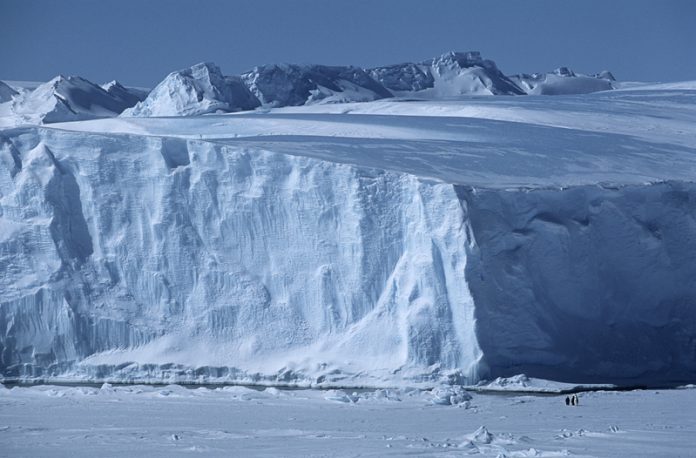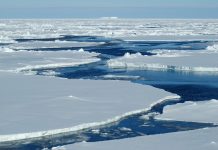Giant Antarctic iceberg A-68 broke off from the Larsen Ice Shelf in July and is set to fully break free after months of little movement
Iceberg A-68, measuring 6,000 sq km, is set to finally venture out into the Weddell sea after months of shuffling back and forth in its position just off the ice shelf it broke away from.
New satellite images show that the giant berg is finally set to fully break free and become a feature of the Arctic waters.
A-68 is larger than greater London and weighs a trillion tonnes.
Scientists expect the berg to travel around the Arctic peninsula before heading North to the Arctic Circumpolar Current, which flows east.
This would transport A-68, the largest berg ever recorded, into the South Atlantic Ocean.
The berg is also showing signs of fragmentation at its edges, which could create semi-permanent ‘ice-islands in shallow waters’.
Antarctic monitoring
Scientists are monitoring the area with the use of satellites to ascertain how the break off will affect the remaining Larsen ice shelf.
A-68s departure will reveal seabeds that have not been visible for 120,000 years.
The area has been granted special protection, giving scientists full access and keeping fisheries away for a minimum of two years.
Previous research from similar breakages revealed entirely new species, and an expedition is expected to visit the area in the Antarctic summer which is just around the corner.
There is concern that fragments of A-68 could disrupt shipping lanes.
They could pose a risk to vessels if they become too small to track with satellites.
Most scientists are not attributing the breakage to global warming, however.
Dr Natalie Robinson for New Zealand’s National Institute of Water and Atmospheric research called it a ‘normal if relatively large’ event but said it was ‘very different from the collapse of its neighbouring ice shelves.’
However, Professor Nancy Bertler from the University of Wellington attributed the break of many ice shelves in the region to the hole in the ozone layer, causing the breakup of ice shelves over 10,000 years old.
The main priority for scientists now is the track its movement and ensure it does not disturb shipping routes, as well as investigating the seabed revealed by its departure.
Editor's Recommended Articles
-
Must Read >> Antarctic sea ice thicker than anticipated
-
Must Read >> Worldwide glacier monitoring system













